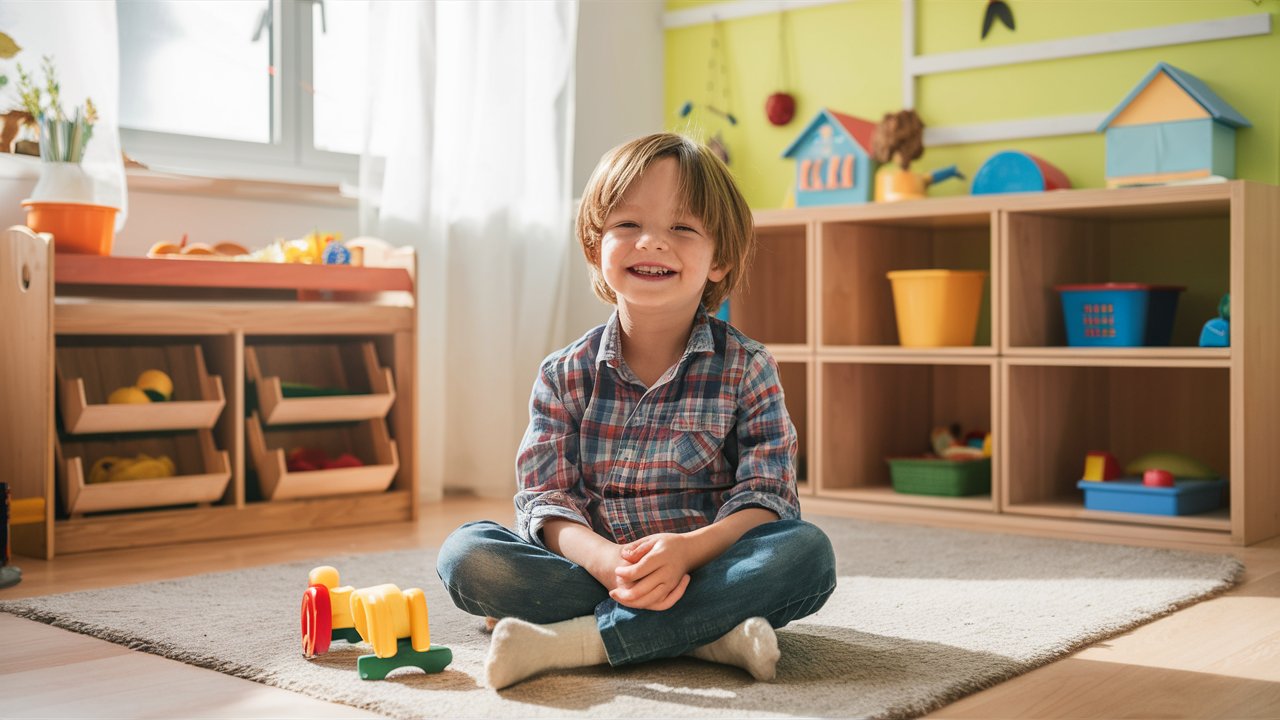Disclosure: Some links on this site are affiliate links. As Amazon Associates, we earn from qualifying purchases (at no cost to you).
Ever wondered how to keep your kids entertained and educated at the same time? Montessori toys are a fantastic way to foster your child’s development through play.
These toys are designed to encourage independent learning and fine motor skills. The best part? You can make many of them at home!
Let’s dive into 10 DIY Montessori toys that you and your kids will love.
10 DIY Montessori Toys
1. Sensory Bottles
Sensory bottles are perfect for engaging your child’s senses and improving their focus. Fill clear plastic bottles with various materials like water, glitter, beads, or sand.

Seal the bottle tightly and let your child shake, roll, and explore the different textures and sounds. These bottles are great for calming down and stimulating visual tracking.
2. Button Snake
A button snake is a simple yet effective way to develop fine motor skills. Use a piece of ribbon and sew a button on one end and a felt square with a slit on the other.

Cut out multiple felt squares with slits and let your child thread them onto the ribbon, practicing their buttoning skills.
3. Color Sorting Cups
Color sorting cups help with color recognition and fine motor skills. Gather small, colored objects like pom-poms or beads and a set of matching colored cups.

Encourage your child to sort the objects into the corresponding cups. This activity also introduces early math concepts like grouping and categorization.
4. Nature Scavenger Hunt
Take the learning outdoors with a nature scavenger hunt. Create a list of items commonly found in your backyard or local park, like leaves, rocks, flowers, and sticks.

Give your child a bag to collect the items and a checklist to mark off what they find. This activity promotes exploration, observation, and a love for nature.
5. DIY Lacing Cards
Lacing cards are excellent for developing hand-eye coordination. Cut out shapes from sturdy cardboard and punch holes around the edges.

Provide your child with a shoelace or piece of yarn and show them how to lace it through the holes. You can create various shapes, like animals or geometric figures, to keep it interesting.
6. Sensory Bin
A sensory bin is a versatile and engaging activity. Fill a large container with materials like rice, beans, sand, or water beads. Add small toys, scoops, and cups for your child to explore.

Sensory bins are great for tactile exploration and can be themed to match your child’s interests, such as a dinosaur dig or a beach day.
7. Alphabet Rocks
Alphabet rocks are a fun way to introduce letters and phonics. Collect smooth, flat rocks and write a letter on each one with a permanent marker.

Use these rocks to practice letter recognition, spelling, and word formation. You can even hide them around the yard for a letter hunt.
8. Clothespin Counting Game
The clothespin counting game helps with number recognition and fine motor skills. Write numbers on the ends of clothespins and create corresponding number cards with dots or pictures.

Encourage your child to match the clothespins to the cards by counting the dots or images. This activity reinforces counting and number matching.
9. Puzzle Blocks
Puzzle blocks are great for problem-solving and spatial awareness. Use wooden blocks and paint or draw different designs on each side. Mix up the blocks and let your child reassemble the pictures.

You can create multiple sets with various difficulty levels to keep the challenge appropriate for your child’s age.
10. DIY Memory Game
A DIY memory game is fun and easy to make. Cut out pairs of matching shapes from cardboard or cardstock and decorate them with stickers or drawings.

Place them face down and take turns flipping them over to find matches. This game enhances memory, concentration, and visual recognition skills.
FAQ
1. What are Montessori toys?
Montessori toys are designed to encourage independent learning and development through hands-on play. They often focus on fine motor skills, sensory exploration, and problem-solving.
2. Why make DIY Montessori toys?
DIY Montessori toys are cost-effective and customizable. Making them at home allows you to tailor activities to your child’s interests and developmental needs.
3. Are DIY Montessori toys safe for kids?
Yes, as long as you use child-safe materials and ensure all components are securely attached. Always supervise young children during play.
4. How can I ensure my DIY toys are educational?
Focus on activities that promote skills like sorting, counting, and sensory exploration. Research Montessori principles to guide your creations.
5. Can older kids benefit from Montessori toys?
Absolutely! Montessori toys can be adapted to suit older children’s developmental stages, offering more complex challenges and activities.
6. How often should I introduce new toys?
Introduce new toys based on your child’s interest and developmental pace. Rotating toys every few weeks keeps them engaged and prevents boredom.
7. Do Montessori toys need to be expensive?
Not at all. Many effective Montessori toys can be made from inexpensive, everyday materials you already have at home.
8. How do I start with DIY Montessori toys?
Begin with simple projects like sensory bottles or lacing cards. As you become more comfortable, you can explore more complex ideas like puzzle blocks or sensory bins.
Final Thoughts
Creating DIY Montessori toys is a wonderful way to engage your child in meaningful, educational play.
These projects are not only cost-effective but also allow you to customize the learning experience to fit your child’s needs.
With a little creativity and some basic materials, you can provide endless opportunities for exploration and growth. Happy crafting!


